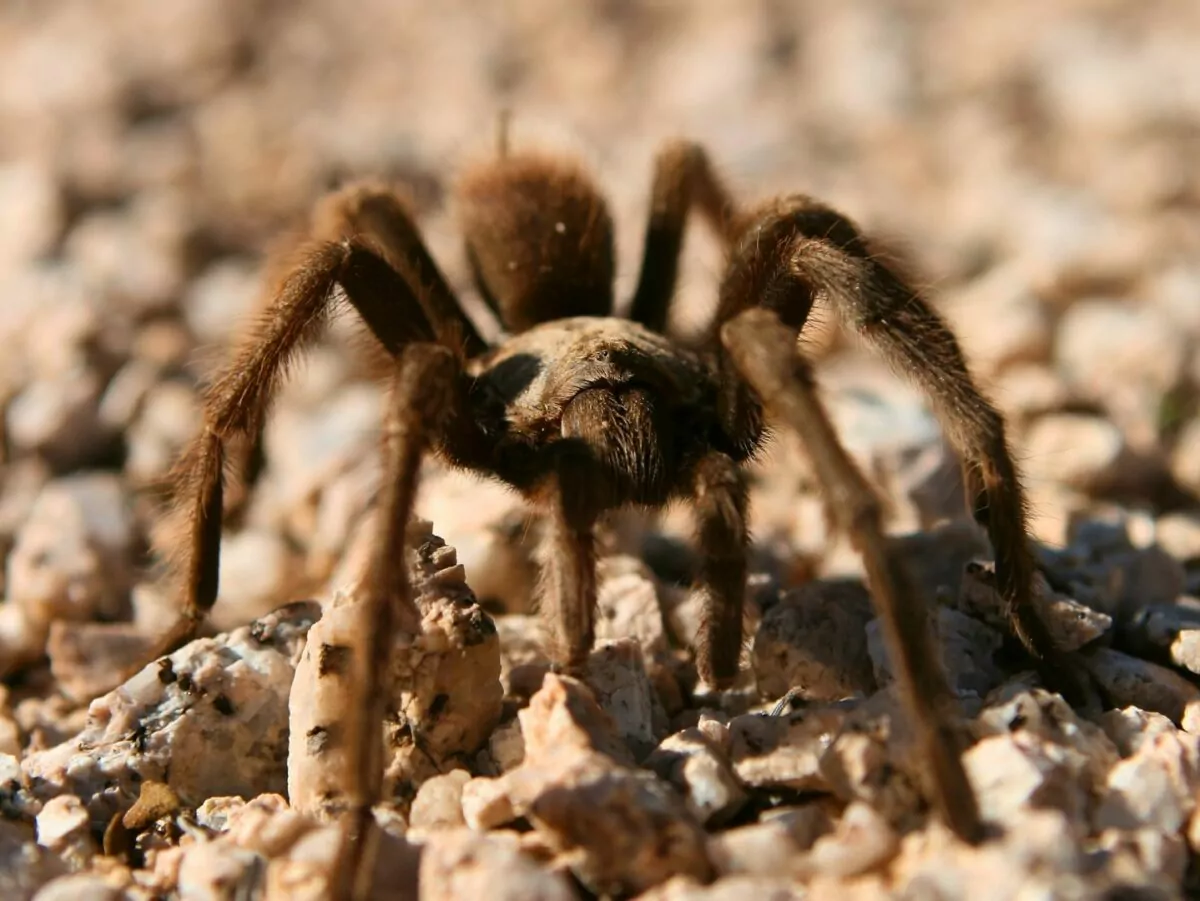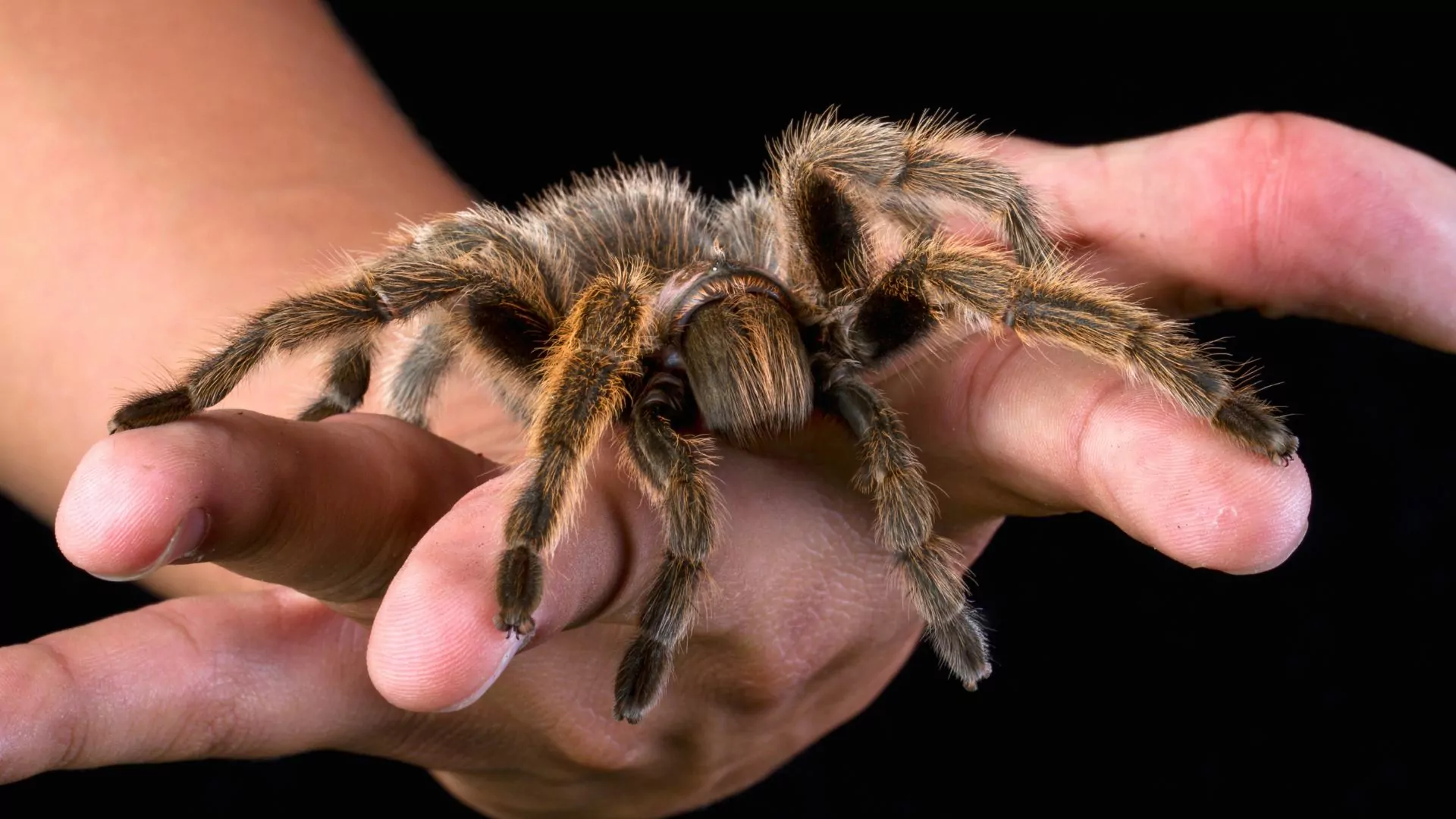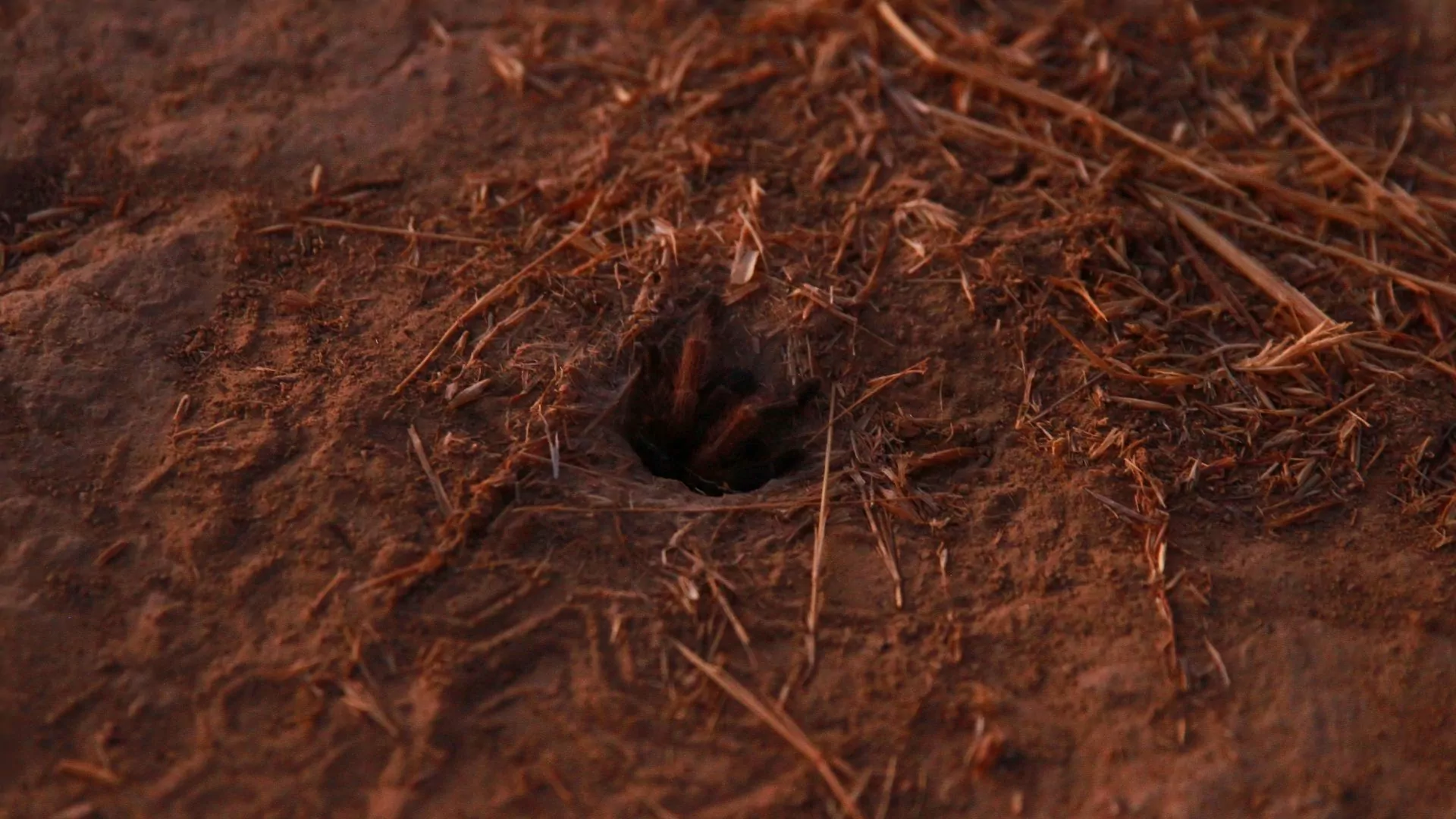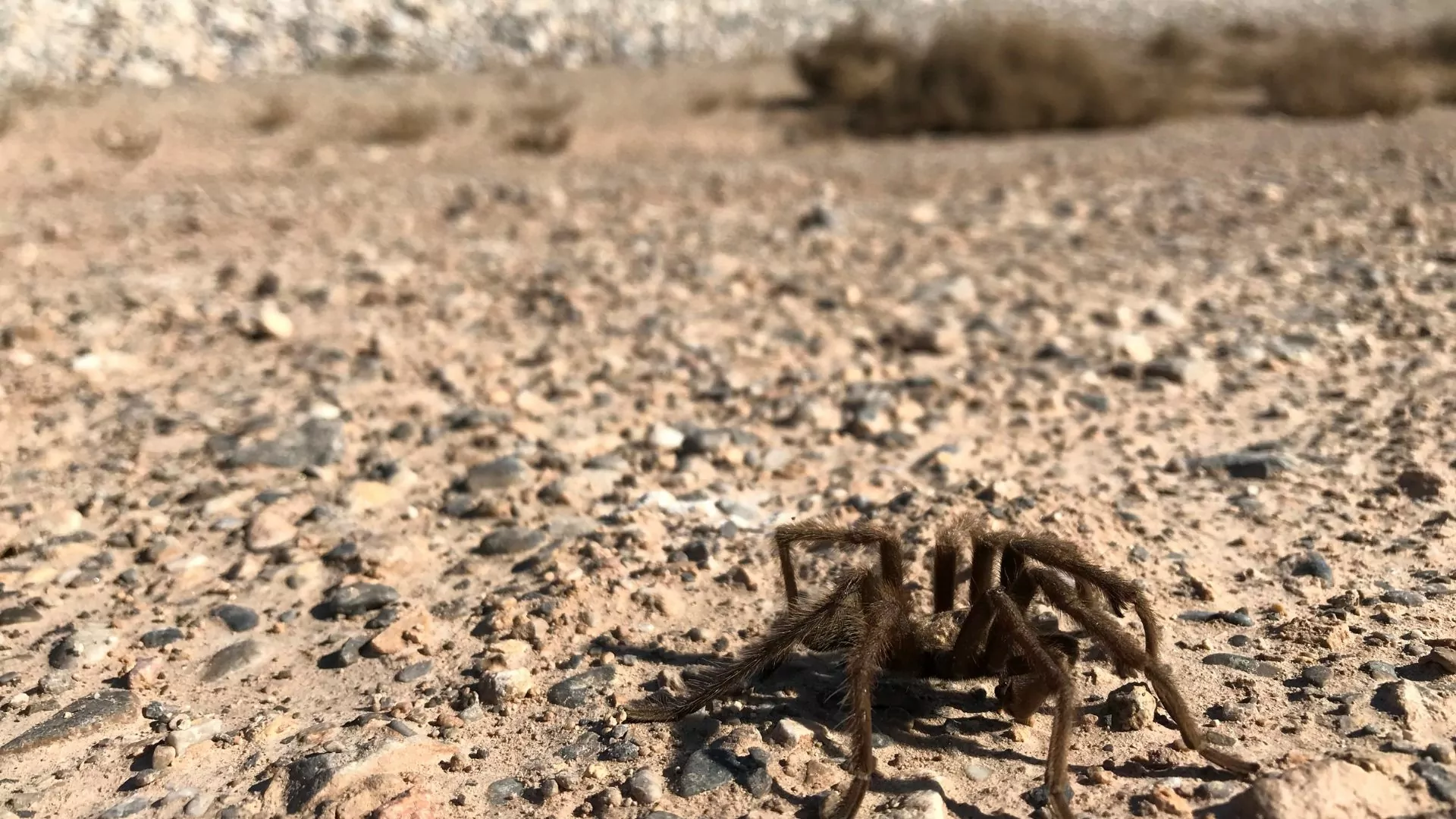Are Tarantulas Dangerous?

Tarantulas have gotten a bad reputation over the years. They are hairy, large, dangerous, super-creepy spiders…. Or are they? I frequently guide trips in the desert so there is typically at least one person on every trip that asks “Are there tarantulas here?“ “Are tarantulas dangerous?” “Will they try to creep into my sleeping bag at night?”
I do my best to reassure them. Because I’m not exactly a spider-lover, and even I think tarantulas are the COOLEST.
WHERE DO TARANTULAS LIVE?
For many people, tarantulas are simply seen as pets, often viewed through a lens of fascination or amusement. These creatures are typically not considered a major threat to humans, which is part of why some individuals are drawn to their distinctive appearance and unique, hairy features. However, for those who don’t share that enthusiasm, the idea of having a tarantula as a pet can be downright unsettling. The thought that some would choose to house these eight-legged creatures within their homes can be shocking to many. It’s important to remember, though, that while tarantulas are often kept as pets, they are actually wild.

Tarantulas can thrive in a remarkable range of environments, from the humid, dense jungles of the tropics to the dry, harsh landscapes of deserts. They are found across nearly every continent on Earth, with the exception of Antarctica. One of their key survival strategies involves burrowing. Most tarantulas dig burrows underground, which provides them with essential protection from both predators and extreme weather conditions.
The burrowed lifestyle also helps regulate their exposure to temperature fluctuations. In desert habitats, for instance, the underground tunnels offer a cooler and more stable environment than the harsh, searing heat of the surface. These tunnels can be impressively deep, with some reaching several feet long, depending on the size of the tarantula.
In addition to their burrows, tarantulas also seek refuge in other natural shelters such as rock crevices or tree hollows. These spaces provide a similar sense of security and isolation from potential dangers. To further protect their homes, many tarantulas line the entrances of their burrows with silk, which serves multiple purposes. Not only does the silk act as a barrier, preventing unwanted visitors from entering, but it also functions as an early warning system. Any movement or disturbance around the burrow is easily detected by the tarantula, alerting them to potential threats.
Types of Tarantulas
Absolutely! There are over 1,100 species of tarantulas scattered across the globe, each one with its own distinct set of characteristics and behaviors. This immense diversity is part of what makes the world of tarantulas so fascinating. From their varied appearances to their different habitats and temperaments, tarantulas offer a remarkable glimpse into the adaptability and variety in nature. Even in my home state of Arizona, there are at least 16 different species. Each one has evolved its own strategies for survival, whether through speed, size, or defense mechanisms, making them a diverse and fascinating group of creatures to study.
Fun facts:
- Tarantulas usually only leave their burrows at night to hunt, but don’t typically travel far.
- There is a much higher likelihood of seeing them in the Fall, when the males travel above ground in search of a mate.
- Tarantulas are carnivorous and mostly feed on insects such as crickets, grasshoppers, and mealworms. However, larger species are capable of eating frogs, toads, lizards, and small rodents. After a large meal, they may not have to eat for up to a month because they have very slow metabolisms.
- Since tarantulas don’t have any teeth, they inject digestive enzymes into their prey that liquifies them and then they suck up the mush.
- Tarantulas have a defensive posture in which they raise their front legs and fangs in order to appear larger and more intimidating.
- They are typically “ambush predators” and wait for their prey to approach until they are close enough to pounce on them.
- Tarantulas molt their exoskeletons in order to grow. This process usually takes a few hours and leaves them very vulnerable. They also have to wait for their new shell to harden before they are no longer susceptible to harm.
- Some species of tarantulas can live upwards of 30 years!
Wait, so are tarantulas dangerous?
While tarantulas are not typically aggressive by nature and generally prefer to avoid human interaction, they will, of course, defend themselves if they feel threatened. Although they are venomous, tarantulas primarily use their venom to subdue and paralyze their insect prey, making it easier for them to consume. In the rare event that they do use their venom on humans, it is usually not harmful. A bite from a tarantula is painful—comparable to the sting of a wasp—but the effects are temporary and rarely serious, with pain and swelling subsiding fairly quickly. Bites typically occur when the tarantula is handled roughly or feels cornered, but they only tend to bite as a last resort.
In addition to venom and biting, tarantulas have another unique defense mechanism: the use of specialized urticating hairs. These fine, barbed hairs cover their abdomen and, when threatened, can be ejected towards an attacker. The hairs are often aimed at the face or eyes and can cause significant irritation.
If they make contact with the skin or eyes, they can cause intense itching, burning, or even temporary blindness in their predator. This defense mechanism serves as a powerful deterrent to potential predators or threats, further emphasizing that, while tarantulas are not naturally aggressive, they are equipped to try and protect themselves if necessary.
MY EXPERIENCE WITH Tarantulas
I am by no means a fan of spiders, but I love tarantulas! They are slow-moving, non-threatening, and fascinating to observe. The first time I saw one in the “wild” was actually inside of a bathroom at a campsite in the Grand Canyon. I went to reach for the door handle to get out, and jumped back when I saw a tarantula about 4 inches wide right on the door!
At this point, I had no idea if they were actually a threat or not, so I very quickly swung the door open and got away as fast as possible. Looking back on my reaction, though common, it is pretty comical. In hindsight, I should have very gently relocated the tarantula outside of the bathroom to keep other people from having the same experience.
Since then, I have seen at least a handful of tarantulas, always in the Fall and alongside the trail. Now that I am much more educated about them, I love to come across them and think of it as a special experience.
Guided Rim to rim grand canyon backpack
APPRECIATING TARANTULAS
While there will always be those who fear tarantulas, it’s worth taking a moment to appreciate these remarkable creatures. They might seem creepy at first, but once you understand their behaviors and role in nature, you can help become their advocate. So the next time someone asks you, are tarantulas dangerous? You can say no.
In fact, they’re fascinating, docile, and greatly add to the beauty and complexity of the natural world. If you are ever lucky enough to witness one in the wild, hopefully you’ll now have a different encounter than my first interaction, and instead you’ll pause to admire it.






